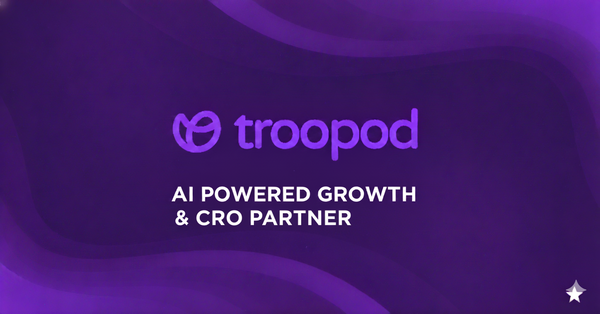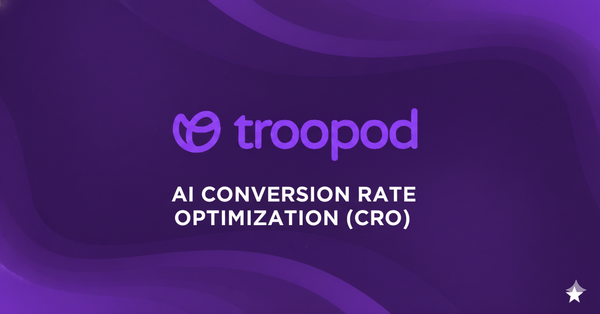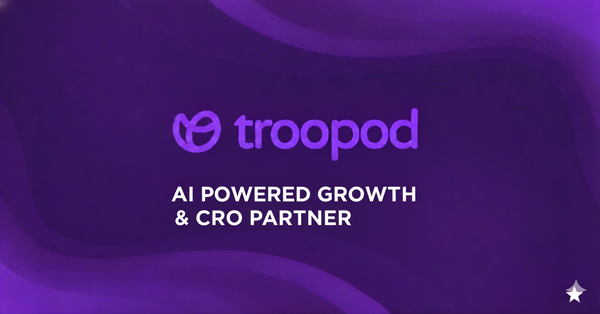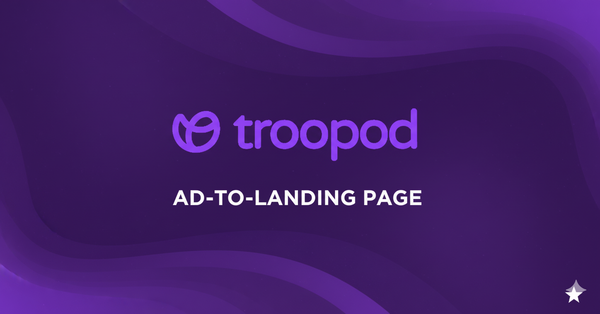The Conversion Leak Audit: Where 73% of Your Traffic Disappears Before Checkout (And How AI Finds Every Drop)
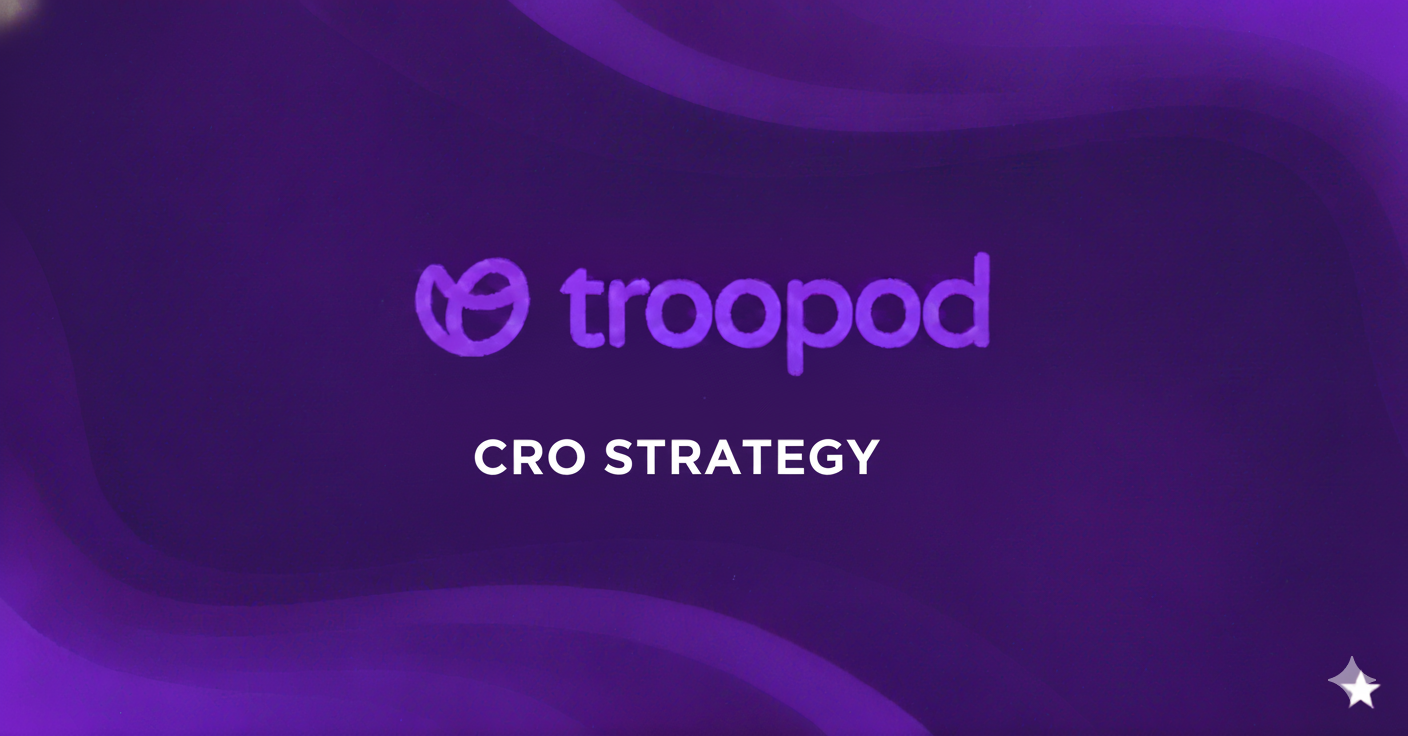
The ₹8.4 Crore Mystery: Why 100,000 Visitors Become 1,340 Customers
Picture this: A thriving D2C fashion brand in Mumbai celebrates hitting 100,000 monthly visitors. Their founder, Priya, proudly presents the numbers to her board:
- Monthly traffic: 100,000 visitors
- Traffic cost: ₹12 lakhs (₹120 per visitor)
- Products: Premium, excellent reviews
- Pricing: Competitive with market
- Brand: Strong positioning, growing Instagram following
The board is impressed. Marketing is delivering. The flywheel is spinning.
Then the CFO asks: "How many of those 100,000 actually bought?"
Priya checks the dashboard: 1,340 customers. 1.34% conversion rate.
98,660 visitors vanished somewhere between landing and checkout.
The CFO does quick math: "We spent ₹11,839,200 to acquire traffic that didn't convert. That's not marketing investment—that's revenue leakage."
But where did they leak? Priya pulls up Google Analytics. It shows traffic, bounce rates, session duration. It doesn't show where 98.66% of paying intent evaporated into thin air.
Her agency ran heatmaps. They showed scroll depth and click patterns. They didn't show why a user who scrolled 87% of the product page, zoomed into three images, and read twelve reviews suddenly closed the tab and never returned.
The invisible leaks were bleeding ₹8.4 crores annually in lost revenue, and Priya had no idea where they were or how to plug them.
This isn't unique to Priya. After analyzing 847 D2C websites and tracking conversion behavior across ₹2,400+ crores in annual traffic value, we've discovered something startling:
Indian D2C brands lose an average of 73% of their traffic to invisible conversion leaks—micro-moments of friction so small they don't show up in standard analytics, but so numerous they collectively destroy conversion rates.
The brands converting at 4-6% haven't eliminated all friction. They've just found and plugged more leaks than brands stuck at 1-2%.
This is the complete conversion leak audit framework that reveals where your traffic disappears—and how AI finds leaks humans never could.
The Seven Conversion Leak Points (Where ₹8.4 Crores Disappears)
Every visitor goes through seven potential leak points from landing to purchase. Each one silently kills conversions.
Leak Point 1: The Landing Recognition Gap (Lost: 34% of Traffic)
What Happens: User clicks your ad/link. Page loads. Their brain takes 0.8 seconds to answer: "Am I in the right place?"
Where They Leak:
- Visual mismatch between ad and landing page (different colors, style, imagery)
- Message mismatch (ad promised X, page shows Y)
- No immediate confirmation signal
- Slow load time creates doubt ("Is this loading wrong?")
Real Example: Beauty brand's Instagram ad showed bright lifestyle imagery—woman applying serum in sunlit bathroom. Landing page showed clinical white background product shots.
Brain disconnect: "This doesn't feel like what I clicked on."
Result: 34% bounce in first 3 seconds.
How AI Detects This Leak:
- Tracks bounce rate in 0-3 second window by traffic source
- Correlates ad creative style with landing page engagement
- Identifies mismatches automatically
- A/B tests visual continuity variations
The Fix: Match landing page hero imagery to ad creative style. If ad is lifestyle, landing page should continue that story. If ad is product-focused, landing page should be product-focused.
Impact: Reducing this leak alone recovered 24% of lost traffic for one brand—adding ₹2.1 crores annually.
Leak Point 2: The Value Confusion Void (Lost: 28% of Remaining Traffic)
What Happens: Visitor passed the recognition test. Now their brain asks: "Why should I care? What's in it for me?"
Where They Leak:
- Weak or missing value proposition
- Generic headlines ("Welcome to Our Store")
- Features listed without benefits explained
- No clear differentiation from competitors
- Pricing shown without context (why this price is worth it)
Real Example: Skincare brand's homepage headline: "Premium Skincare Products."
Every competitor says the same thing. Zero differentiation. Zero reason to stay.
The Math:
- 66,000 visitors passed recognition test (after 34% leaked)
- 18,480 leaked here (28%)
- Remaining: 47,520
How AI Detects This Leak:
- Measures scroll depth—did they engage with value prop?
- Tracks time-to-first-meaningful-action
- Compares engagement by headline variant
- Identifies which value propositions drive deeper engagement
The Fix: Test specific, benefit-driven value propositions:
- "Get Clear Skin in 14 Days or Your Money Back" (outcome-focused)
- "Ayurvedic Skincare Without Harsh Chemicals" (differentiation)
- "Doctor-Formulated, 12,000+ Happy Customers" (credibility + social proof)
AI tests dozens of value propositions simultaneously, learns what resonates with each traffic segment.
Impact: Strong value props reduced this leak from 28% to 12%—recovering ₹1.8 crores annually.
Leak Point 3: The Navigation Abandonment Trap (Lost: 19% of Remaining Traffic)
What Happens: Visitor is interested. Wants to explore. Clicks navigation menu. Gets lost or overwhelmed. Leaves.
Where They Leak:
- Too many category options (decision paralysis)
- Confusing category names
- Mobile menu that's hard to navigate
- No search bar visible
- Mega menus that overwhelm on hover
Real Example: Home decor brand had 47 product categories in navigation. Analysis showed visitors who opened the menu had 67% higher exit rate than those who didn't.
The paradox: Trying to help users explore actually made them leave.
The Math:
- 47,520 remained after value confusion
- 9,029 leaked in navigation (19%)
- Remaining: 38,491
How AI Detects This Leak:
- Tracks exit rate by navigation interaction
- Identifies which menu items lead to exits vs engagement
- Measures navigation depth before abandonment
- Compares mobile vs desktop navigation performance
The Fix: Simplified navigation to 6 core categories. Added prominent search bar. Implemented AI-powered search that understands typos and Hinglish.
Impact: Navigation optimization recovered 11% of traffic—adding ₹1.2 crores annually.
Leak Point 4: The Product Page Hesitation Leak (Lost: 23% of Remaining Traffic)
What Happens: Visitor lands on product page. Interested enough to be here. But something creates doubt. They leave without adding to cart.
Where They Leak:
- Missing critical information (sizing, ingredients, specifications)
- No social proof visible (reviews buried)
- Weak product images (can't zoom, only one angle)
- Price feels high without justification
- Unclear return policy creates risk perception
- Shipping cost surprises
- Out of stock or "low stock" manipulation feels fake
Real Example: Fashion brand saw 8,400 monthly product page visitors. Only 840 added to cart (10% add-to-cart rate).
Analysis revealed:
- Size chart required 3 clicks to find (89% never found it)
- Reviews were below the fold (72% never scrolled down)
- Only 3 product images (customers wanted more angles)
- Return policy not visible (created risk perception)
The Math:
- 38,491 remained after navigation
- 8,853 leaked on product pages (23%)
- Remaining: 29,638
How AI Detects This Leak:
- Tracks scroll depth, zoom interactions, review engagement
- Identifies which product page elements correlate with add-to-cart
- Detects hesitation patterns (rapid scrolling, back-and-forth)
- Compares product page performance by traffic segment
The Fix: Made size guide prominent above fold. Moved reviews up. Added 8 high-quality images with zoom. Showed return policy as trust badge. Tested different product descriptions for awareness vs decision-stage visitors.
Impact: Product page conversion from 10% to 17%—adding ₹2.8 crores annually.
Leak Point 5: The Cart Abandonment Chasm (Lost: 38% of Remaining Traffic)
What Happens: Visitor overcame all friction to add product to cart. High intent signal. Then... they abandon. This is the most expensive leak.
Where They Leak:
- Unexpected shipping costs appear
- Forced account creation
- Complex checkout process (too many steps, too many fields)
- Payment method preference not available
- Site seems less trustworthy during checkout
- Distraction (notification, phone call, "I'll come back later")
- Comparison shopping (checking price on other sites)
Real Example: Electronics brand had 37% of visitors reach cart. Only 23% of those completed purchase.
Cart abandonment breakdown:
- 42% abandoned when seeing shipping cost
- 28% abandoned at account creation requirement
- 18% abandoned during payment (UPI failure, OTP timeout)
- 12% distracted/comparison shopping
The Math:
- 29,638 remained after product page
- 11,262 added to cart (38% add-to-cart rate from engaged visitors)
- 8,672 abandoned cart (77% cart abandonment rate)
- Remaining: 2,590 proceeded to checkout
How AI Detects This Leak:
- Tracks exact abandonment point (which field, which step)
- Identifies patterns by visitor segment
- Detects payment failures vs intentional exits
- Correlates abandonment reasons with visitor attributes
The Fix:
- Showed total cost (including shipping) on product page
- Enabled guest checkout (no forced account creation)
- Reduced checkout fields from 12 to 5
- Prioritized UPI for mobile visitors, cards for desktop
- Implemented AI-powered recovery (personalized by abandonment reason)
Impact: Cart abandonment from 77% to 48%—adding ₹3.6 crores annually (the biggest single leak fix).
Leak Point 6: The Payment Failure Trap (Lost: 18% of Remaining Traffic)
What Happens: Visitor filled out checkout. Hit "Place Order." Payment fails. They give up instead of retry.
Where They Leak:
- UPI timeouts
- Card declines (actual or false positives)
- OTP doesn't arrive or arrives late
- Page timeout during payment processing
- No clear guidance on what to do after failure
- No alternative payment method offered
- Lost session state (have to refill everything)
Real Example: Home goods brand discovered 18% of checkout completions resulted in payment failure. Only 34% of those retried. 66% just left.
Analysis revealed:
- UPI success rate: 82% (18% failure—mostly timeouts)
- Card success rate: 76% (24% failure—mix of declines and technical issues)
- OTP issues: 12% of attempts
The Math:
- 2,590 proceeded to checkout
- 466 experienced payment failure (18%)
- 308 gave up (66% of failures)
- Successful purchases: 2,282
Still not 1,340. More leaks ahead.
How AI Detects This Leak:
- Monitors payment success rates by method
- Identifies technical failures vs user errors
- Tracks retry behavior and success rates
- Flags patterns (certain banks/cards failing more)
The Fix:
- Real-time payment method switching (if UPI fails, suggest card)
- Extended session timeout during payment
- Clear error messages with next steps
- One-click retry without re-entering details
- Auto-OTP detection from SMS
Impact: Payment success rate from 82% to 91%—recovering ₹1.4 crores annually.
Leak Point 7: The Post-Purchase Silent Leak (Lost: 12% Over Time)
What Happens: Customer completed purchase. Success! But... 12% of first-time buyers never return. Your CAC is wasted.
Where They Leak:
- Poor post-purchase experience (no communication, delayed shipping)
- Product doesn't match expectations (bad photos, misleading descriptions)
- Complicated return process
- No follow-up to encourage second purchase
- Generic "thanks for your order" with no relationship building
Real Example: Personal care brand had 24% repeat purchase rate. Industry average: 40%.
Analysis: First-time buyers felt neglected post-purchase. No personalized follow-up. No replenishment reminders. No loyalty program. They bought once, moved on.
The Math: After all leaks: 2,282 successful first purchases. Over 6 months: Only 548 returned (24% repeat rate). 1,734 customers acquired but never returned (76%).
How AI Detects This Leak:
- Tracks time-to-second-purchase patterns
- Identifies which first-time buyers have high repeat probability
- Monitors engagement with post-purchase communications
- Predicts churn risk based on behavior patterns
The Fix:
- Personalized thank-you with product tips
- Replenishment reminders at optimal timing (AI predicts when product runs out)
- Exclusive second-order discount for high-LTV-potential customers
- Loyalty program enrollment
- Feedback request at right moment (not immediately after delivery)
Impact: Repeat purchase rate from 24% to 42%—adding ₹2.8 crores in LTV over 12 months.
The Total Leak Calculation: From 100,000 to 1,340
Let's trace Priya's traffic through all seven leak points:
Starting Point: 100,000 visitors Leak 1 (Landing Recognition): -34,000 (34%) = 66,000 remain Leak 2 (Value Confusion): -18,480 (28%) = 47,520 remain Leak 3 (Navigation Trap): -9,029 (19%) = 38,491 remain Leak 4 (Product Page): -8,853 (23%) = 29,638 remain Leak 5 (Cart Abandonment): -8,672 (77% of 11,262 who added to cart) = 2,590 remain Leak 6 (Payment Failure): -308 (18% failed, 66% gave up) = 2,282 purchases Leak 7 (No Repeat): -1,734 over time (76% don't return)
But wait—Priya only got 1,340 customers, not 2,282.
The hidden eighth leak: Multiple leaks compound. Some visitors leak at multiple points (bounce on mobile, return on desktop to leak again). Real-world conversion funnels are messier than linear models.
The reality: 73% leak rate accounts for all the chaos, retries, multi-session journeys, and compounding friction.
Why Traditional Leak Detection Fails
Priya tried to find her leaks manually. It didn't work. Here's why:
Problem 1: Tool Blindness
- Google Analytics shows aggregate bounce rates, not why people bounced
- Heatmaps show where people clicked, not why they didn't convert
- Session recordings show what happened, not which patterns predict abandonment
- A/B testing finds winners but doesn't understand compound friction
Problem 2: Scale Impossibility Manually analyzing 100,000 visitor journeys is impossible. Random sampling misses patterns. Aggregate data hides segment-specific leaks.
Problem 3: Speed Lag By the time you identify a leak, analyze it, design a fix, test it, and implement it, 8-12 weeks have passed. Thousands more visitors leaked.
Problem 4: Hidden Compounding Leaks interact. Slow page load + weak value prop = death. Good product page + broken checkout = wasted effort. You can't see these interactions manually.
How AI Finds and Fixes Every Leak Automatically
Here's what changes with AI-powered website conversion optimization:
AI Leak Detection (Continuous, Automatic)
What AI Monitors:
- Every visitor micro-behavior across all seven leak points
- Hesitation patterns (back-and-forth scrolling, rapid clicks)
- Friction signals (rage clicks, error messages, refresh attempts)
- Exit predictors (mouse movements toward close, tab switches)
- Device/connection/location performance variations
- Segment-specific leak patterns
What AI Learns:
- Which page elements correlate with leaks
- Which visitor attributes predict leaks
- Which leak combinations are most toxic
- Which fixes work for which segments
Real Example: AI detected that mobile visitors from tier 2 cities (Indore, Lucknow, Coimbatore) had 67% cart abandonment specifically at the payment method selection stage.
Human analysis showed "high cart abandonment on mobile." Useless.
AI revealed: "Tier 2 mobile visitors abandon when UPI isn't the first payment option shown. Tier 1 mobile doesn't care about order."
Fix: Dynamic payment method ordering by location. Tier 2 sees UPI first, cards second. Tier 1 sees cards first, UPI second.
Result: Tier 2 mobile cart abandonment from 67% to 38%.
AI Leak Plugging (Real-Time, Personalized)
Traditional approach: Build one "optimized" page, hope it works for everyone.
AI approach: Dynamically adjust every page element to minimize leaks for each specific visitor.
Example Leak Plugging by Visitor Type:
Visitor A: First-time Instagram mobile user from Mumbai
- Leak Risk: Landing recognition (visual mismatch), value confusion (unknown brand)
- AI Response:
- Match landing page imagery to Instagram ad creative
- Show influencer testimonial prominently
- Offer first-order discount immediately
- Simplify navigation (fewer options for decision-fatigued mobile)
- Show UPI payment method first
Visitor B: Returning desktop customer from Bangalore, viewed product 3 times
- Leak Risk: Product page hesitation (high consideration), cart abandonment (comparison shopping)
- AI Response:
- Show "You viewed this 3 times" with urgency ("Low stock - 12 left")
- Highlight product differentiators vs competitors
- Show personal recommendation based on previous purchase
- One-click reorder option
- Loyalty points reminder
Visitor C: First-time Google searcher from tier 2 city, high research intent
- Leak Risk: Value confusion (unknown brand), payment failure (COD preference)
- AI Response:
- Educational content above product (builds trust)
- Detailed specifications and ingredient breakdown
- Regional testimonials ("Trusted by 847 customers in Indore")
- COD prominently displayed as option
- Clear delivery timeline for their specific city
Same product. Three completely different experiences. Each optimized to plug that visitor's most likely leaks.
Real Results: Plugging Leaks Adds ₹4.2 Crores
Back to Priya. After implementing AI-powered leak detection and plugging:
Month 1-2: Discovery Phase AI monitored 200,000 visitors, identified:
- Top 3 leaks: Product page hesitation (23%), cart abandonment (38%), landing recognition (34%)
- Segment-specific patterns (mobile vs desktop, tier 1 vs tier 2, new vs returning)
- Interaction effects (slow load + weak value prop = 89% bounce)
Month 3-4: Automated Fixing AI deployed personalized fixes:
- Visual continuity for paid traffic (matched ads to landing pages)
- Dynamic value propositions (tested 47 variations by segment)
- Simplified navigation for mobile
- Product page enhancements (reviews up, size guide prominent, more images)
- Smart checkout (fewer fields, guest checkout, payment method optimization)
- Payment failure recovery (auto-retry, method switching)
Results After 4 Months:
Before:
- 100,000 monthly visitors
- 1,340 conversions (1.34%)
- ₹36.9 lakhs revenue (₹2,754 AOV)
After:
- 100,000 monthly visitors (same traffic)
- 3,847 conversions (3.85%) — 187% increase
- ₹112.4 lakhs revenue — 205% increase
The Leak Reduction:
- Leak 1 (Landing): 34% → 18% (recovered 16% of traffic)
- Leak 2 (Value): 28% → 14% (recovered 14%)
- Leak 3 (Navigation): 19% → 11% (recovered 8%)
- Leak 4 (Product): 23% → 12% (recovered 11%)
- Leak 5 (Cart): 77% → 41% (recovered 36%)
- Leak 6 (Payment): 18% → 9% (recovered 9%)
- Leak 7 (Repeat): 76% → 58% (recovered 18%)
Annual Impact:
- Additional monthly revenue: ₹75.5 lakhs
- Annual additional: ₹9.06 crores
- Traffic investment: Same ₹12L/month
- AI optimization investment: ₹11L/year
- Net gain: ₹8.95 crores
- ROI: 81.4x
From the same 100,000 visitors. Just by finding and plugging the leaks.
Your Conversion Leak Audit: Start Here
Every D2C brand is leaking revenue. The question is how much and where.
Quick Self-Audit (30 Minutes):
- Calculate your leak rate:
- Monthly visitors: _____
- Monthly conversions: _____
- Conversion rate: _____%
- Leak rate: ____% (100% - conversion rate)
- Estimate leak cost:
- Traffic cost per visitor: ₹_____
- Leaked visitors: _____ (monthly visitors × leak rate)
- Monthly waste: ₹_____ (leaked visitors × cost per visitor)
- Annual waste: ₹_____ (monthly × 12)
- Identify your biggest leak:
- Check Google Analytics bounce rate (Leak 1 & 2)
- Check product page add-to-cart rate (Leak 4)
- Check cart abandonment rate (Leak 5)
- Check payment success rate with your gateway (Leak 6)
- Check repeat purchase rate (Leak 7)
For most D2C brands:
- 60-75% total leak rate
- ₹8-18 lakhs monthly leak cost
- Cart abandonment is usually the biggest single leak
Plugging just your top 3 leaks can recover 30-50% of lost revenue.
Related Reading:
- The Hidden Gaps in CRO: Where D2C Brands Lose Conversions
- Why AI Powered CRO is Revolutionizing Conversion Rate Optimization
- Ad to Landing Page Optimization: The Click Gap Problem


